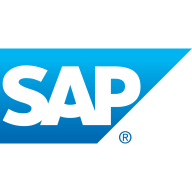

Find out what your peers are saying about Microsoft, Informatica, IBM and others in Data Integration.
| Product | Market Share (%) |
|---|---|
| SAP Analytics Hub | 0.5% |
| SSIS | 4.0% |
| Informatica Intelligent Data Management Cloud (IDMC) | 3.7% |
| Other | 91.8% |
| Product | Market Share (%) |
|---|---|
| SAP Data Hub | 1.1% |
| Microsoft Purview Data Governance | 13.8% |
| Collibra Platform | 9.2% |
| Other | 75.9% |

| Company Size | Count |
|---|---|
| Small Business | 2 |
| Midsize Enterprise | 3 |
| Large Enterprise | 3 |
SAP Analytics Hub simplifies access to analytics scattered across multiple heterogeneous environments. The solution recommends the best analytics to fit personalized needs and grants users with actionable insights without compromising agility.
The SAP® Data Hub solution enables sophisticated data operations management. It gives you the capability and flexibility to connect enterprise data and Big Data and gain a deep understanding of data and information processes across sources and systems throughout the distributed landscape. The unified solution provides visibility and control into data opportunities, integrating cloud and on-premise information and driving data agility and business value. Distributed processing power enables greater speed and efficiency.
We monitor all Data Integration reviews to prevent fraudulent reviews and keep review quality high. We do not post reviews by company employees or direct competitors. We validate each review for authenticity via cross-reference with LinkedIn, and personal follow-up with the reviewer when necessary.